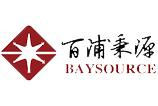Contact Us
Skype: agrolee312
Whatsapp: +86 13266919026
Wechat: +86 13266919026
Email: info@baysource.cn
Cotton
| Cotton Pests | ||
| Targets | Solutions | |
| Cotton bollworms Spotted bollworm American bollworm Pink Bollworm | 10% BIFENTHRIN EC | 800ml/HA |
| 75% ACEPHATE SP | 800gm/HA | |
| 18.5% CHLORANTRANILIPROLE SC | 150-200ml/HA | |
| 10% CYPERMETHRIN EC | 550-750ml/HA | |
| 25% DIFLUBENZURON WP | 300gm/HA | |
| 5% EMAMECTIN BENZOATE SG | 200-250gm/hA | |
| 15.8% INDOXACARB EC | 500ml/HA | |
| 10% NOVALURON EC | 1000ml/HA | |
| 10% PYRIDALYL EC | 750-1000ml/HA | |
| 50% Acephate + 10% Bifenthrin WDG | 800gm/HA | |
| 10% Cypermethrin + 10% Indoxacarb SC | 500gm/ha | |
| Whiteflies, Aphids, Thrips, Jassids | 50% DIAFENTHIURON WP | 600ml/HA |
| 20% DINOTEFURAN SG | 150gm/ha | |
| 5% FIPRONIL SC | 150-200gm/ha | |
| 50% FLONICAMID WG | 150gm/ha | |
| 21.7% THIACLOPRID SC | 100-125ml/ha | |
| 50% Acephate + 1.8% Imidacloprid SP | 1000gm/ha | |
| 10% Cypermethrin + 10% Indoxacarb SC | 500ml/HA | |
| Red Spider mite | 18.5% DICOFOL EC | 2700-5400ml/HA |
| 22.9% SPIROMESIFEN SC | 600ml/HA | |
| 5% FENPYROXIMATE EC | 300-600ml/ha | |
| 10% ETOXAZOLE SC | 400ml/ha | |
| 11.01% Spirotetramat +11.01% Imidacloprid SC | 500gm/ha | |
| Cotton Diseases | ||
| Targets | Solutions | |
| Leaf Spot Grey mildew | 50% Carbendazim WP | 250gm/ha |
| Kresoxim-methyl 44.3% SC | 500ml/ha | |
| Kresoxim-methyl 44.3% SC | 500ml/ha | |
| Alternaria leaf spot | Propiconazole 25% EC | 500ml/ha |
| Pyraclostrobin 20% WG | 500gm/ha | |
| Fluxapyroxad 167 g/l + Pyraclostrobin 333 g/l SC | 300ml/ha | |
| Tebuconazole 50% + Trifloxystrobin 25% WG | 300gm/ha | |
| Metiram 55% + Pyraclostrobin 5% WG | 1500gm/ha | |
| Cotton Weeds | ||
| Targets | Solutions | |
| Annual gramineous weeds | 10.8% haloxyfop-P-methyl EC | 900-1400ml/ha |
| 6.9% fenoxaprop-P-ethyl ME | 750-900ml/ha | |
| 48% ntrifluralin EC | 1500-2250ml/ha | |
| 80% diuron WDG | 1200-1350gm/ha | |
| 30% butralin EW | 5000-6000ml/ha | |
| Annual weeds | 3% flumioxazin + 31% pendimethalin EC | 2250-3000ml/ha |
| 4% oxyfluorfen + 10% oxadiazon EC | 3000-3600ml/ha | |
| 15% pendimethalin + 30% metolachlor EC | 2100-2400ml/ha | |
| 15% prometryn + 20% pendimethalin EC | 3000-3750ml/ha | |
| 33% pendimethalin EC | 2250-3000ml/ha | |
| 20% sethoxydim EC | 1500-1800ml/ha | |
| Cotton Growth Regulate | ||
| Targets | Solutions | |
| Growth Regulator | 75% ethephon AS | 600-900 times dilution |
| 90% mepiquat chloride SG | 52.5-66.0gm/ha | |
| 25% flumetralin SC | 900-1200ml/ha | |
| 0.01% brassinolide EC | 2500-2700 times dilution | |
| 1.8% compound sodium nitrophenolate AS | 2000-3000 times dilution | |
| 7% diethyl aminoethyl hexanoate + 73% mepiquat chloride SP | 82.5-90gm/ha | |
| 24.998% mepiquat chloride + 0.002% 24-epibrassinolide AS | 195-240ml/ha | |
| 2% mepiquat chloride + 43% chlormequat AS | 1800-2700 ml/ha | |
| Defoliation | 50% thidiazuron WP | 450-600gm/ha |
| 50% thidiazuron SC | 450-600ml/ha | |
| 80% thidiazuron WDG | 375-450gm/ha | |
| 36% thidiazuron + 18% diuron SC | 150-180ml/ha | |
| Cotton Nutrition | ||
| Fertilizer characteristics and fertilization techniques for cotton Cotton is a crop that requires a large amount of fertilizer. Scientifically fertilizing cotton is essential for the growth and yield of cotton. Nutritional elements needed for cotton Cotton requires many nutrients, 16 of which are known, namely carbon, hydrogen, oxygen, nitrogen, phosphorus, potassium, calcium, magnesium, sulfur, iron, zinc, manganese, copper, molybdenum, boron, chlorine, among which carbon Hydrogen and oxygen account for about 95% of the dry weight of the plant, mainly from air and water; the other various elements account for about 5% of the dry weight of the cotton plant, mainly from the mineral salts of the soil. At present, cotton fields are mainly insufficient in nitrogen, phosphorus and potassium. Common symptoms of cotton deficiency When the nitrogen supply is insufficient, the cotton plant grows slowly, the plant is short, the leaves are small and the leaves are light, the number of fruit branches and the total number of fruit nodes are small, the buds and fall off, the aging is early, and the yield is low. When the supply of phosphorus is insufficient, the cotton plant grows slowly, the root growth is poor, the leaf color is dark green, the plant is short, the reproductive growth is blocked, and maturity are delayed, the infertility seed is increased, the fiber maturity is poor, and the yield is low. And quality is declining. When the supply of potash is insufficient, the cotton leaves in the seedling stage or the bud stage. The leaves in the middle part of the main stem first appear chlorosis, and then turn yellow. After that, the tip and edge of the leaves are defocused, curling downwards, and finally the whole leaves turn reddish brown. Dry and shedding, usually called "red leaf stem blight". Any cotton field suffering from this disease often shows early decline of cotton plants, small cotton bolls, poor bolls, poor fiber maturity and low cotton yield. When the supply of boron is insufficient, the petiole produces an annulus, and the cotton buds are often necrotic. The plants grow short and have many branches. In severe cases, the cotton plants do not bloom, do not ring, or buds without flowers and flowers. When the supply of zinc is insufficient, the cotton leaves are small and the veins are green, so that the leaves are necrotic and the green part becomes bronze. When the supply of manganese is insufficient, the leaves are in the shape of a cup, and the veins are chlorotic. In severe cases, the internodes become shorter and the plants are dwarfed. In addition to nitrogen, phosphorus and potassium, the symptoms of other nutrients are generally not very obvious in production. Therefore, the application of nutrients is mainly determined by the amount of soil. Effects of NPK fertilizers on growth and development Nitrogen has the most obvious effect on cotton. From the seedling to the flowering and bolling stage, an appropriate amount of nitrogen is needed. The nitrogen supply is appropriate, the cotton leaves are dark green, the plants are robust, the buds are numerous, the yield is high, and the quality is good. If the initial supply of nitrogen is too much, it will cause cotton to grow. If the supply in the middle of the period is insufficient, the cotton leaves will turn yellow and become smaller, fall off more, and prematurely decline in the later stage, and the yield will be low. If the supply is excessive in the middle and late stages, it will cause cotton to grow wild and reduce production in the late stage. Reduce quality. Phosphorus can promote the root development of the plant in the early stage of cotton growth, which makes the seedlings grow early, and has an important promoting effect on early flowering and early flowering. In the late growth stage, it can promote the maturation of cotton boll and increase the weight of boll. Potassium plays a role in strengthening the stalk and enhancing the resistance to adverse factors; when potassium is deficient, the plant is susceptible to disease, the leaves turn red, and the leaves fall early. The stem blight of cotton is mainly caused by potassium deficiency. Cotton fertilizer characteristics At the seedling stage, nitrogen absorption accounts for 5%, phosphorus accounts for 3%, and potassium accounts for 2%; At the beginning of flowering, the absorption of nitrogen accounted for 11%, phosphorus accounted for 7%, and potassium accounted for 9%. During the flowering period, the nitrogen uptake accounted for 56%, phosphorus accounted for 24%, and potassium accounted for 36%. From the flower to the boll opening period, the absorption of nitrogen accounted for 23%, phosphorus accounted for 52%, and potassium accounted for 42%; From bollard to cotton, the absorption of nitrogen accounts for 5%, phosphorus accounts for 14%, and potassium accounts for 11%. It can be seen from the above that the general trend of fertilizer demand during the whole growth period of cotton is a dynamic pattern of “less-more-less”. The absorption in the seedling stage was less, and the absorption amount increased significantly after the bud, and reached the peak of absorption in the flowering and bolling stage, and decreased into the boll opening period, and the absorption capacity of the root system weakened, so that the absorption decreased rapidly. The absorption characteristics of nitrogen, phosphorus and potassium in different growth stages of cotton are also different. The peak of nitrogen fertilizer absorption is in the front (from flowering stage to full flowering stage), and the peak of phosphorus and potassium fertilizer absorption is later (flowering period to boll opening stage), which is beneficial to the application of phosphorus and potassium nutrition. Cotton fertilization principle According to the study, for every 50 kg of lint produced, cotton absorbs about 13.35 kg of nitrogen, 4.65 kg of phosphorus and 13.35 kg of potassium from the soil. The ratio of nitrogen, phosphorus and potassium is 1:0.3:1. However, as the yield increases, the amount of fertilizer required decreases. Therefore, the increase in cotton yield is not solely due to the fertilizer factor, but the result of the comprehensive effects of various cultivation techniques. The principle of fertilization of cotton should be based on base fertilizer and topdressing; organic fertilizers and chemical fertilizers are supplemented. Based on the application of basic fertilizer, the traditional fertilization technology is based on the characteristics of fertilizer demand in different growth stages of cotton, and masters the principle of “light application of seedling fertilizer, stable application of bud fertilizer, re-application of flower fertilizer, and application of top-loading fertilizer” to simplify fertilization technology. The seedling fertilizer, the bud fertilizer and the topping fertilizer are omitted, and the fertilization measures are “applying the base fertilizer and reapplying the flower fertilizer”. |






 Add: No.707 LianMeng Road,Shijiazhuang,Hebei,China 050000
Add: No.707 LianMeng Road,Shijiazhuang,Hebei,China 050000